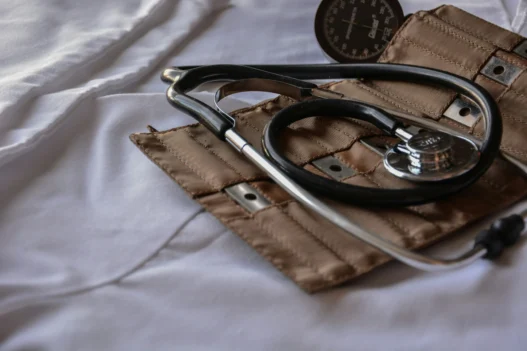ICD-11 code 1G80, Sequelae of tuberculosis, refers to the long-term consequences or aftereffects resulting from a previous tuberculosis infection. These sequelae may include damage to the lungs, respiratory system, or other organs, as well as persistent symptoms such as coughing, chest pain, or breathing difficulties. The presence of sequelae indicates that the individual has previously been infected with tuberculosis and may continue to experience health complications as a result.
Individuals with sequelae of tuberculosis may require ongoing medical care and monitoring to manage their symptoms and prevent further complications. Treatment for sequelae of tuberculosis may include medications, therapies, or interventions to address specific health issues related to the previous infection. It is important for healthcare providers to be aware of the presence of sequelae in patients with a history of tuberculosis in order to appropriately assess and manage their health needs.
Table of Contents:
- #️⃣ Coding Considerations
- 🔎 Symptoms
- 🩺 Diagnosis
- 💊 Treatment & Recovery
- 🌎 Prevalence & Risk
- 😷 Prevention
- 🦠 Similar Diseases
#️⃣ Coding Considerations
The SNOMED Clinical Terms (CT) code equivalent to the ICD-11 code 1G80, which represents sequelae of tuberculosis, is 85470002. This SNOMED CT code specifically refers to the long-term effects or consequences of a previous tuberculosis infection. SNOMED CT, a comprehensive clinical terminology used by healthcare professionals, enables standardized coding and communication of clinical information across different healthcare systems. By utilizing SNOMED CT, healthcare providers can accurately document and exchange information about patients’ diagnoses, treatments, and outcomes related to tuberculosis sequelae. This standardization of terminology helps improve the quality and safety of patient care by reducing errors and facilitating information sharing among healthcare professionals worldwide. In conclusion, the SNOMED CT code 85470002 plays a crucial role in accurately representing sequelae of tuberculosis in the healthcare setting.
In the United States, ICD-11 is not yet in use. The U.S. is currently using ICD-10-CM (Clinical Modification), which has been adapted from the WHO’s ICD-10 to better suit the American healthcare system’s requirements for billing and clinical purposes. The Centers for Medicare and Medicaid Services (CMS) have not yet set a specific date for the transition to ICD-11.
The situation in Europe varies by country. Some European nations are considering the adoption of ICD-11 or are in various stages of planning and pilot studies. However, as with the U.S., full implementation may take several years due to similar requirements for system updates and training.
🔎 Symptoms
Symptoms of 1G80 (Sequelae of tuberculosis) can vary depending on the individual and the extent of damage caused by the infection. Common symptoms may include persistent cough, chest pain, shortness of breath, fatigue, and unintended weight loss. Some individuals may also experience coughing up blood, night sweats, and fever.
Complications of tuberculosis sequelae can include the formation of scar tissue in the lungs, known as pulmonary fibrosis, which can lead to difficulty breathing and decreased lung function. This scarring can also cause cavities or holes in the lungs, increasing the risk of recurrent infections and further complications.
In some cases, tuberculosis sequelae can lead to the development of bronchiectasis, a condition characterized by enlarged and damaged airways in the lungs. This can result in frequent respiratory infections, chronic cough, and increased production of mucus. Additionally, individuals with tuberculosis sequelae may be at greater risk for developing other respiratory conditions, such as chronic obstructive pulmonary disease (COPD) or asthma.
🩺 Diagnosis
Diagnosis of 1G80, or the sequelae of tuberculosis, involves a combination of medical history, physical examination, imaging studies, laboratory tests, and diagnostic procedures. An important component of the diagnostic process is obtaining a thorough medical history to identify any past episodes of active tuberculosis and its treatment.
During the physical examination, healthcare providers may look for specific signs and symptoms associated with sequelae of tuberculosis, such as respiratory symptoms, chest deformities, and neurological deficits. Imaging studies, such as chest X-rays and CT scans, may be performed to assess the extent of lung damage and detect any complications, such as fibrosis or cavitation.
Laboratory tests, including blood tests and sputum analysis, can help confirm the presence of Mycobacterium tuberculosis infection and monitor disease progression. In some cases, a biopsy or bronchoscopy may be necessary to obtain tissue samples for further evaluation. Overall, a multidisciplinary approach involving a team of healthcare professionals is essential for accurate diagnosis and management of sequelae of tuberculosis.
💊 Treatment & Recovery
Treatment and recovery methods for 1G80, also known as Sequelae of tuberculosis, typically depend on the specific symptoms and complications experienced by the individual. In cases where there are residual lung damage or chronic respiratory issues, treatment may involve medications to manage symptoms such as shortness of breath or coughing. Pulmonary rehabilitation programs may also be recommended to improve lung function and quality of life.
For individuals experiencing musculoskeletal problems as a result of tuberculosis sequelae, physical therapy and occupational therapy may be prescribed to help improve mobility, strength, and function. These therapies can also aid in reducing pain and increasing the individual’s ability to perform daily activities. In some cases, surgical intervention may be necessary to address more severe musculoskeletal issues, such as joint deformities or spinal problems.
Patients with tuberculosis sequelae may also benefit from psychological support and counseling to address any emotional or mental health challenges that may arise as a result of their condition. Support groups and mental health professionals can provide guidance and tools to help individuals cope with the physical and emotional effects of their illness. Overall, a multidisciplinary approach is often recommended to address the complex medical, physical, and emotional needs of individuals with tuberculosis sequelae.
🌎 Prevalence & Risk
In the United States, the prevalence of sequelae of tuberculosis (1G80) varies depending on the population studied. Studies have shown that a significant number of individuals who have been treated for tuberculosis may experience long-term complications such as chronic lung disease, lung scarring, and respiratory issues.
In Europe, the prevalence of sequelae of tuberculosis is also significant, especially in Eastern European countries with higher rates of tuberculosis infection. Despite advances in treatment and control efforts, many individuals continue to experience ongoing health problems related to their prior tuberculosis infection.
In Asia, where tuberculosis remains a major public health concern, the prevalence of sequelae of tuberculosis is high. The region accounts for a large proportion of the global burden of tuberculosis, and many individuals who have been treated for the disease continue to suffer from long-term complications such as respiratory issues and lung damage.
In Africa, the prevalence of sequelae of tuberculosis is also significant, particularly in countries with high rates of tuberculosis infection and limited access to quality healthcare. Many individuals in this region who have been treated for tuberculosis may experience ongoing health problems related to their prior infection.
😷 Prevention
To prevent 1G80 (Sequelae of tuberculosis), it is important to address each related disease separately.
First and foremost, to prevent chronic renal failure as a sequela of tuberculosis, it is essential to provide prompt and appropriate treatment for tuberculosis to prevent the spread of the infection to the kidneys. Regular monitoring of kidney function during and after tuberculosis treatment is crucial to detect any early signs of renal damage. Additionally, maintaining a healthy lifestyle, including a balanced diet and regular exercise, can help prevent the development of chronic renal failure.
To prevent bronchiectasis as a sequel of tuberculosis, it is important to ensure that tuberculosis is promptly diagnosed and effectively treated to prevent damage to the airways. Regular follow-up care after tuberculosis treatment is essential to monitor the condition of the lungs and detect any early signs of bronchiectasis. Avoiding smoking and exposure to air pollution can also help prevent the development of bronchiectasis in individuals with a history of tuberculosis.
To prevent hemoptysis as a sequela of tuberculosis, it is critical to ensure that tuberculosis is diagnosed and treated promptly to prevent damage to the lungs and blood vessels. Individuals with a history of tuberculosis should be monitored for any signs of hemoptysis, such as coughing up blood, and seek medical attention immediately if such symptoms occur. Avoiding heavy lifting and strenuous activities that may increase the risk of bleeding in the lungs can also help prevent hemoptysis in individuals with a history of tuberculosis.
🦠 Similar Diseases
1G80 (Sequelae of tuberculosis) involves long-term complications following an episode of tuberculosis. One similar disease is B90 (Sequelae of leprosy). Leprosy can result in nerve damage, skin lesions, and muscle weakness even after treatment. Individuals with B90 may experience disfigurement and disabilities as a result of the disease.
Another related disease is B94.0 (Sequelae of other and unspecified infectious and parasitic diseases). This code encompasses sequela from a variety of infectious diseases, including tuberculosis, leprosy, and other infections. These sequelae may include organ damage, chronic inflammation, and impaired immune function.
Furthermore, E05.0 (Thyrotoxicosis with diffuse goiter) may present similar long-term effects as 1G80. Thyrotoxicosis, a condition of excessive thyroid hormone production, can lead to goiter and other complications in the thyroid gland. Patients with E05.0 may experience ongoing thyroid dysfunction and related symptoms following treatment.
Additionally, Q89.4 (Congenital malformation syndromes predominantly affecting facial appearance) can result in long-term facial deformities similar to those seen in individuals with 1G80. This syndrome may involve abnormal development of facial bones, skin, and other structures, causing lasting aesthetic and functional challenges. Patients with Q89.4 may require ongoing medical management and surgical interventions to address these sequelae.

